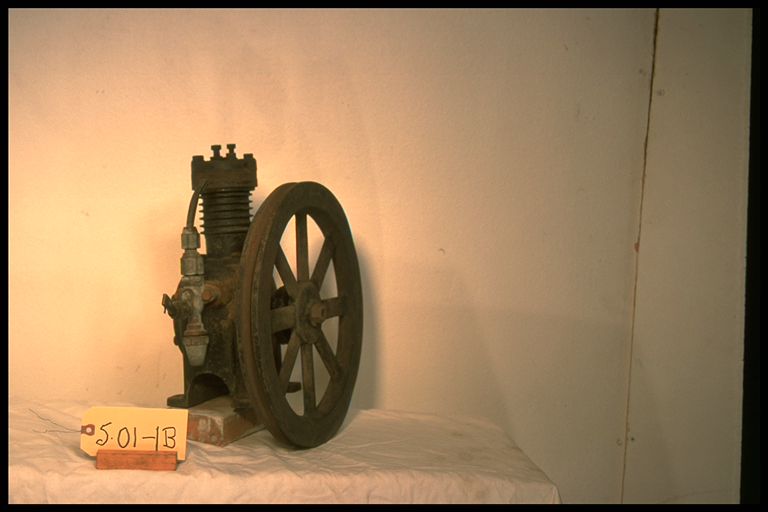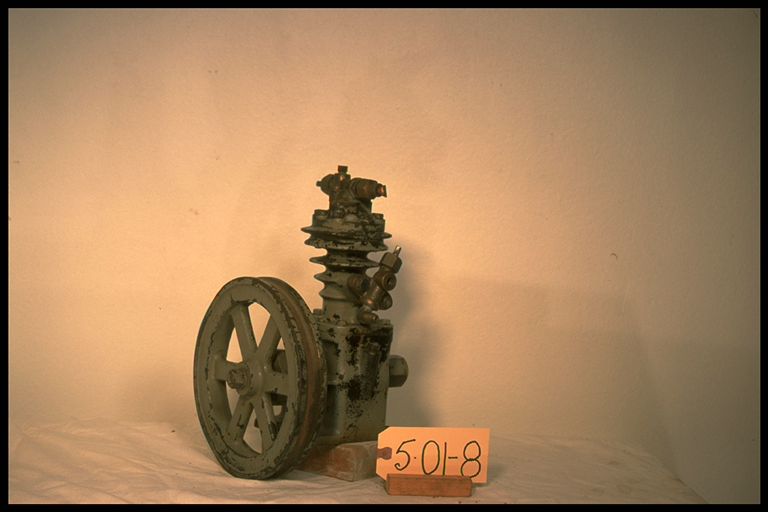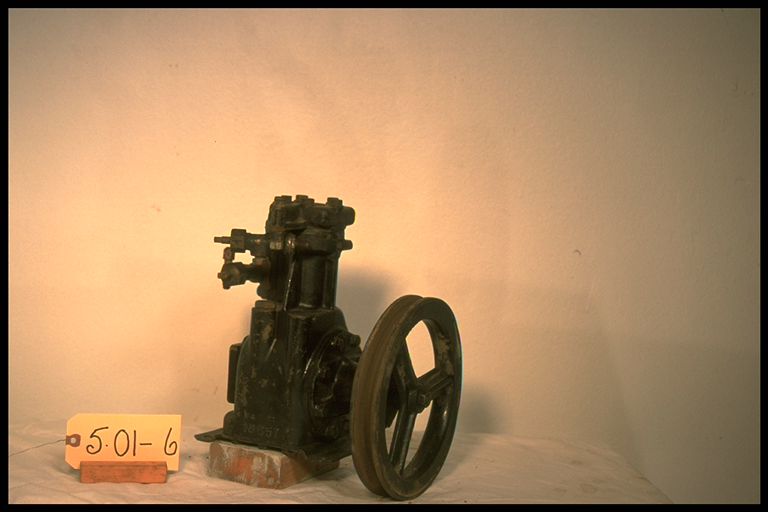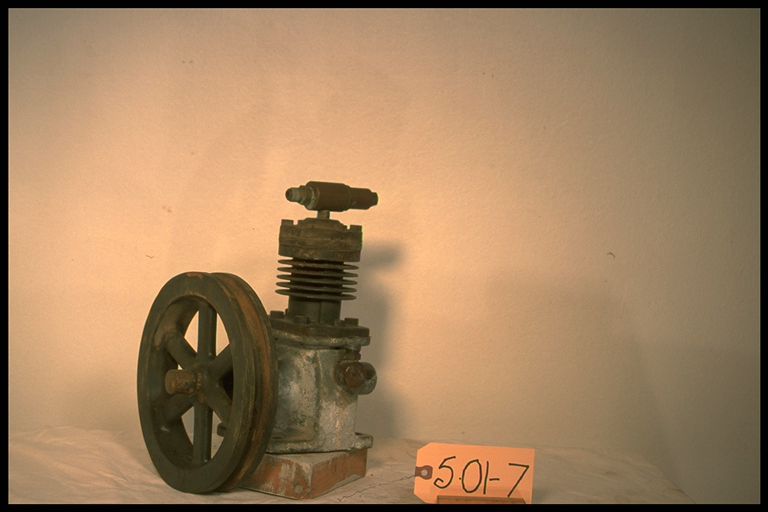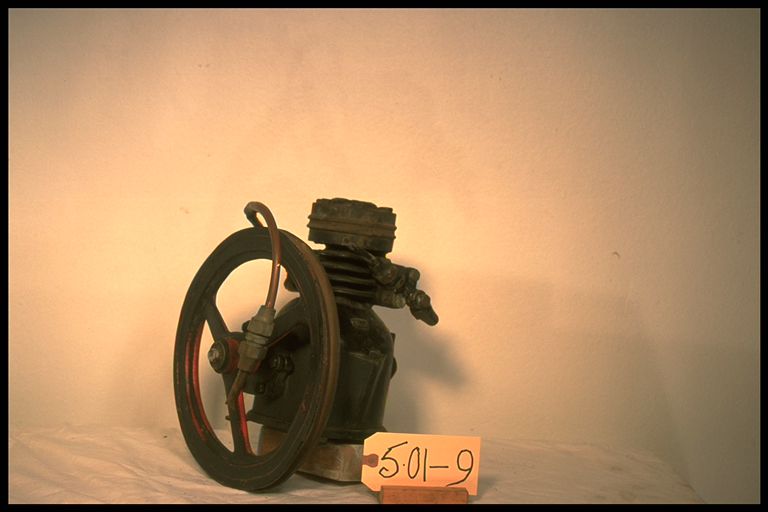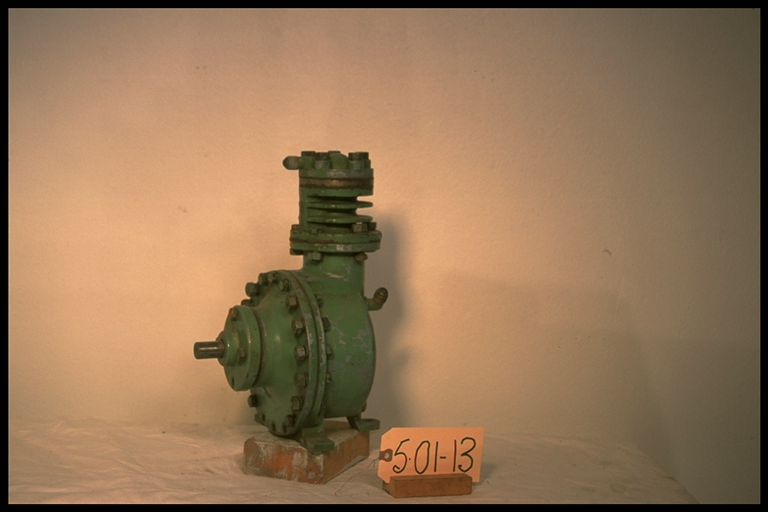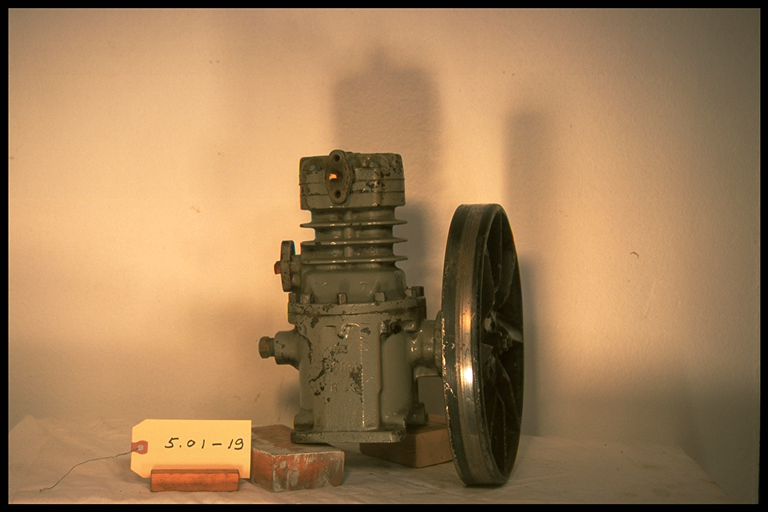5.01-1A: Frigo-Matic 1926 Compressor
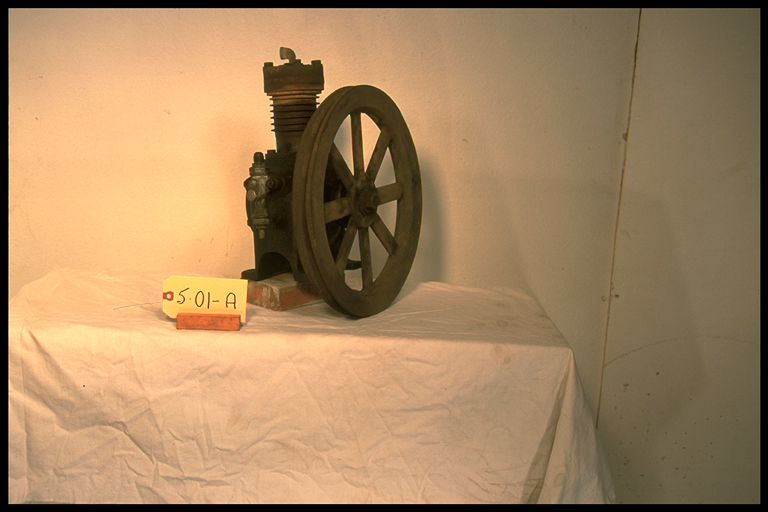
| HHCC Accession No. 2003.087 | HHCC Classification Code: 5.01-1A |
|---|
Description:
An early, crude piece of industrial looking machinery, this 50 lb. compressor was made in Brantford Ont. It comes as close to marking the beginning of the Canadian refrigeration manufacturing industry, as may be possible. Accompanied by the odour of sulphur dioxide, it would be tentatively accepted into Canadian households in the mid 1920’s with much trepidation and often discomfort., Frigo-Matic Ltd., Brampton Ont., 1926
Group:
5.01 Refrigerating and Air Conditioning Compressors - Household
Make:
Frigo-Matic
Manufacturer:
Frigo-Matic Ltd., Brantford Ont.,
Model:
Serial No.:
Size:
13x8x16’h
Weight:
50 lbs.
Circa:
1926
Rating:
Exhibit, education, and research quality, illustrating the crude beginnings of the Canadian refrigeration industry, as well as the design concepts and construction of compressors in this pioneering period.
Patent Date/Number:
Provenance:
From York County (York Region) Ontario, once a rich agricultural hinterlands, attracting early settlement in the last years of the 18th century. Located on the north slopes of the Oak Ridges Moraine, within 20 miles of Toronto, the County would also attract early ex-urban development, to be come a wealthy market place for the emerging household and consumer technologies of the early and mid 20th century.
This artifact was discovered in the 1950’s in the used stock of T. H. Oliver, Refrigeration and Electric Sales and Service, Aurora, Ontario, an early worker in the field of agricultural, industrial and consumer technology.
Type and Design:
A reciprocating compressor with 2” dia. cylinder and 1 3/4” stroke, equipped with 16” fly wheel weighing 18lbs, it would be a challenge to start with the electric motors of the day.
Designed for use with sulphur dioxide, with a flapper suction valve mounted on the top of the piston and gasketed, discharge, valve plate, it shows the signs of years of corrosion, evident on head bolts.
The bronze bellows, inboard, shaft seal would be a critical aspect of the compressor engineering, keeping the noxious refrigerant in the system and out of the kitchens of the nation.
Shown here with original fitments, as removed from the job site, the compressor illustrates something of the trade practices of the period. Of interest is the heavy brass service valves with SAE flare connections, illustrating the early development of this standard - which still continues in wide use.
Prevailing practice of the period was to have the refrigeration mechanic install the condensing unit in the basement. It would then be connected with rolled copper tubing to the cabinet refrigerator, looking much like the icebox, which it had recently replaced.
Construction:
Material:
Special Features:
Accessories:
Capacities:
Performance Characteristics:
Operation:
Control and Regulation:
Targeted Market Segment:
Consumer Acceptance:
Merchandising:
Market Price:
Technological Significance:
Manufactured in Brantford, Ontario, it would help to establish Brantford as the “refrigeration capital of Canada”, starting in the early years of the 20th century.
Industrial Significance:
While the name “Frigo-Matic” would not echo down through the years, as have the names of other pioneers of the period such as Kelvinator and Frigidaire, it was none-the-less an important marker in the history of the Canadian HVACR industry.
Socio-economic Significance:
Socio-cultural Significance:
The household refrigerator of the 1920’s was a prerogative of Canada’s economic and social elite, this compressor being used in an estate home in York County [York Region] north of Toronto in the mid 1920’s through early 30’s.
Donor:
G. Leslie Oliver, The T. H. Oliver HVACR Collection
HHCC Storage Location:
Tracking:
Bibliographic References:
Notes:
Related Reports:
A Celebration Of Canadian HVACR Technology Canada’s First Half Century, 1900 To 1950. A Special Exhibit Of Historic Artifacts Prepared For The CMX 2002 Show Toronto, March 21-23, 2002, Catalogue, HVACR Heritage Centre Canada, Sponsored by The Founding Committee
